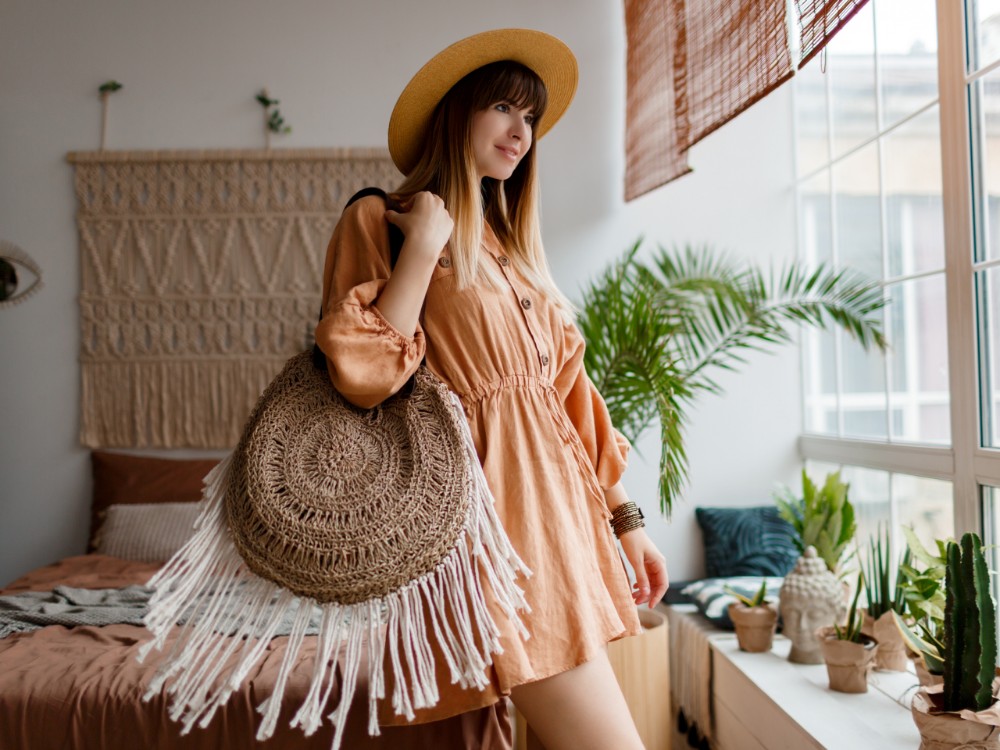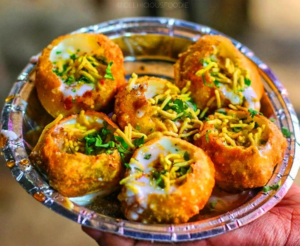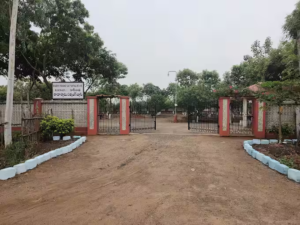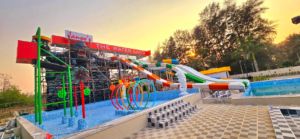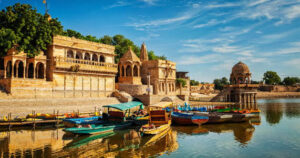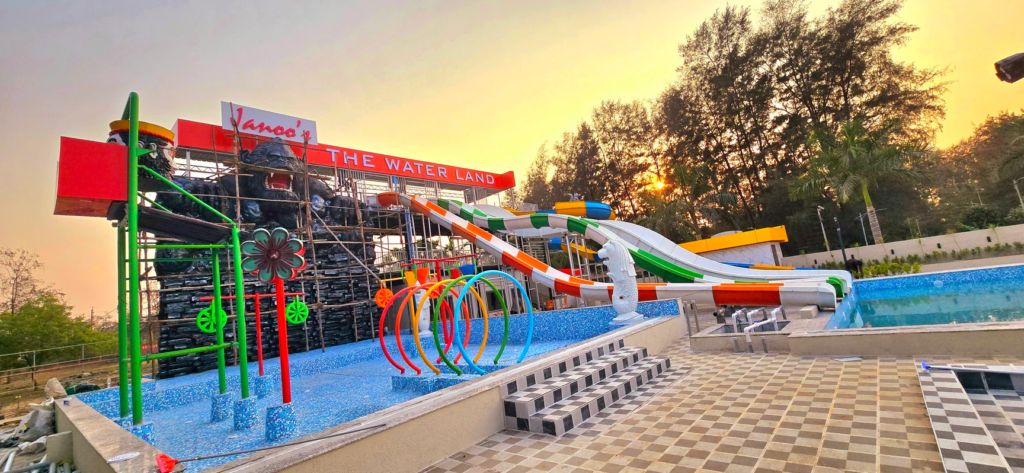Rajasthan, a land steeped in history and culture, is renowned for its vibrant festivals that bring its traditions, art, and heritage to life. These celebrations offer visitors a unique opportunity to immerse themselves in the rich tapestry of Rajasthani culture. From the colorful kite festival to the sacred cattle fair, each event showcases a different facet of this diverse state. Let’s explore some of the most significant cultural festivals of Rajasthan, their origins, and what makes them special.
- Pushkar Camel Fair (Pushkar Mela)
One of Rajasthan’s most famous festivals, the Pushkar Camel Fair, takes place in the holy town of Pushkar every November. This extraordinary spectacle combines a livestock fair with a religious pilgrimage, creating a unique cultural experience.
Origin and Significance:
The fair originated as a time for cattle traders to do business, but it has evolved into a major tourist attraction. It coincides with the Kartik Purnima, a holy day in the Hindu calendar when pilgrims take a dip in Pushkar Lake to wash away their sins.
What to Expect:
- Thousands of camels, horses, and cattle are brought to trade
- Camel races and beauty contests
- Cultural performances including folk music and dance
- Ferris wheels and other carnival attractions
- Religious ceremonies and rituals at the Brahma Temple
- Hot air balloon rides offering panoramic views of the fair
The fair is a photographer’s paradise, with opportunities to capture the essence of Rajasthani culture against the backdrop of the Thar Desert.
- Desert Festival, Jaisalmer
Held annually in February, the Desert Festival of Jaisalmer is a colorful celebration of Rajasthani culture set against the stunning backdrop of the golden sands of the Thar Desert.
Origin and Significance:
The festival was started to attract tourists to the region and showcase the rich culture of Rajasthan. It’s held during the winter months when the desert climate is more pleasant.
What to Expect:
- Camel races and polo matches
- Traditional Rajasthani folk performances including Kalbeliya and Gair dances
- Turban-tying and Mr. Desert competitions
- Puppet shows and acrobatics
- Local handicraft exhibitions
- Spectacular sound and light show at the Jaisalmer Fort
The festival culminates on a full moon night with a musical performance under the starlit desert sky, creating a magical atmosphere.
- Gangaur Festival
Gangaur is one of the most important festivals for women in Rajasthan, celebrated in honor of Goddess Gauri, the consort of Lord Shiva.
Origin and Significance:
The word ‘Gangaur’ is derived from ‘Gan’ (Lord Shiva) and ‘Gaur’ (Goddess Parvati). The festival celebrates marital fidelity and is observed with particular fervor by unmarried women seeking suitable husbands.
What to Expect:
- Women dressed in colorful traditional attire carrying pots on their heads
- Processions featuring images of Gan and Gauri
- Boat procession in Udaipur on Lake Pichola
- Fasting and prayers by women
- Traditional songs and dances
The festival lasts for 18 days, with the grandest celebrations taking place in Jaipur, Udaipur, and Nathdwara.
- Teej Festival
Teej is a monsoon festival celebrated by women across Rajasthan. It’s dedicated to the Goddess Parvati and celebrates the union of Shiva and Parvati.
Origin and Significance:
The festival coincides with the monsoon season and is associated with swings, an important element of monsoon festivities in India. For married women, it’s a time to pray for marital bliss, while unmarried women pray for a good husband.
What to Expect:
- Women dressed in green clothes and adorned with henna designs
- Swings decorated with flowers in public spaces
- Fasting by women
- Procession of the Teej mata (goddess) through the streets
- Folk songs and dances
- Special Teej bazaars selling bangles, mehndi, and sweets
The most elaborate Teej celebrations can be witnessed in Jaipur, where a grand procession winds its way through the old city.
- Marwar Festival, Jodhpur
The Marwar Festival, held annually in Jodhpur during October, is a two-day extravaganza celebrating the heroes of Rajasthan through music and dance.
Origin and Significance:
Originally known as the Maand Festival, it honors the heroes of Rajasthan and the romantic lifestyle of Rajasthan’s rulers.
What to Expect:
- Folk music performances, especially the Maand style of Rajasthan
- Traditional dance performances
- Camel tattooing
- Camel polo
- Events held at historic venues like Mehrangarh Fort and Umaid Bhawan Palace
The festival offers a deep dive into the martial and artistic traditions of the Marwar region.
- Brij Holi, Bharatpur
While Holi is celebrated across India, the Brij Holi in Bharatpur, Rajasthan, is particularly famous for its unique traditions.
Origin and Significance:
Brij Holi is associated with the legends of Lord Krishna and his beloved Radha. It’s celebrated in the Brij region, which includes parts of Rajasthan and Uttar Pradesh.
What to Expect:
- Celebration starts a week before the main Holi day
- Lathmar Holi, where women playfully beat men with sticks
- Huranga, a game played at Baldeo temple the day after Holi
- Traditional folk songs and dances
- People smearing each other with colors and drenching each other with colored water
The festivities in Bharatpur offer a more traditional and less commercialized Holi experience.
- Kite Festival (Makar Sankranti)
The Kite Festival, coinciding with Makar Sankranti in January, transforms the skies of Jaipur into a colorful spectacle.
Origin and Significance:
Makar Sankranti marks the transition of the sun into the zodiac sign of Makara (Capricorn), signaling the end of winter. Flying kites is a way to celebrate the arrival of spring.
What to Expect:
- Thousands of kites dotting the sky
- Kite flying competitions
- Special kite markets
- Traditional sweets made of sesame and jaggery
- Bonfires and folk music in the evening
The festival is particularly spectacular in Jaipur, where the pink city provides a stunning backdrop for the colorful kites.
- Elephant Festival, Jaipur
The Elephant Festival, usually held on the eve of Holi in March, is a unique celebration showcasing Rajasthan’s beloved elephants.
Origin and Significance:
The festival celebrates the important role elephants have played in Rajasthani culture, from being used in wars to being symbols of royal power.
What to Expect:
- Elephants decorated with vibrant colors and jewelry
- Elephant beauty contests and races
- Elephant polo matches
- Folk dance performances
- Tug-of-war between elephants and humans
Note: In recent years, the festival has been suspended due to animal rights concerns. Check the current status before planning a visit.
- Mewar Festival, Udaipur
The Mewar Festival coincides with Gangaur and is celebrated with particular enthusiasm in Udaipur.
Origin and Significance:
The festival welcomes the advent of spring and honors the union of Lord Shiva and Goddess Parvati.
What to Expect:
- Women carrying images of Gangaur and Isar (representing Shiva and Parvati) in a procession
- Boat procession on Lake Pichola
- Cultural performances at Gangaur Ghat
- Fireworks display
- Traditional Rajasthani bazaar
The festival offers a unique blend of religious devotion and cultural celebration against the backdrop of Udaipur’s lakes and palaces.
- Nagaur Fair
The Nagaur Fair, held annually in January-February, is one of the largest cattle fairs in India.
Origin and Significance:
Originally a trader’s fair for cattle and spices, it has evolved into a significant cultural event.
What to Expect:
- Trading of cattle, camels, and horses
- Camel and bullock races
- Tug-of-war competitions
- Jugglers, puppeteers, and acrobats performing
- Exhibition of Rajasthani arts and crafts
The fair offers a glimpse into rural Rajasthani life and traditions.
- Kajli Teej, Bundi
Kajli Teej is a monsoon festival celebrated with great fervor in Bundi, Rajasthan.
Origin and Significance:
The festival is dedicated to Lord Shiva and Goddess Parvati and celebrates the arrival of the monsoon.
What to Expect:
- Women swinging on decorated swings
- Folk music and dance performances
- Traditional Rajasthani food
- Cultural programs at Taragarh Fort
- Procession of a palanquin carrying the idols of Shiva and Parvati
The celebrations in Bundi offer a more intimate and traditional festival experience compared to larger cities.
- Baneshwar Fair
The Baneshwar Fair is a tribal festival held on the banks of the Soma and Mahi rivers in Dungarpur district.
Origin and Significance:
It’s primarily a religious festival for Bhil tribals, dedicated to Lord Shiva.
What to Expect:
- Tribal devotees taking holy dips in the rivers
- Chanting and prayers at the Baneshwar Temple
- Tribal dance and music performances
- Traditional rituals and offerings
- A glimpse into the culture of Rajasthan’s tribal communities
This fair offers a unique opportunity to witness and understand the traditions of Rajasthan’s tribal population.
Experiencing Rajasthan’s festivals is like stepping into a living, breathing cultural extravaganza. Each celebration, with its unique rituals, performances, and significance, offers a window into the soul of this vibrant state. From the religious fervor of Gangaur to the artistic showcases of the Marwar Festival, from the rural charm of the Nagaur Fair to the regal splendor of the Elephant Festival, these events paint a comprehensive picture of Rajasthan’s diverse cultural landscape.
These festivals are not just spectacles for tourists; they are living traditions that continue to play a vital role in the lives of Rajasthan’s people. They serve as a means of preserving age-old customs, passing down traditional arts and crafts, and strengthening community bonds.
For visitors, these festivals offer an unparalleled opportunity to immerse themselves in Rajasthani culture. Whether you’re watching skilled artisans at work, joining in a traditional dance, savoring local delicacies, or simply marveling at the riot of colors and sounds, you’re sure to come away with unforgettable memories and a deeper appreciation of Rajasthan’s rich heritage.
When planning your visit to coincide with these festivals, remember that dates may vary each year as many are based on the lunar calendar. It’s always a good idea to check the exact dates in advance and book accommodations early, as popular festival times can get very busy.
Participating in these festivals is like being part of a grand, ongoing celebration of life, color, and tradition. So, pack your bags, bring your camera, and prepare to be swept away by the festive spirit of Rajasthan!
